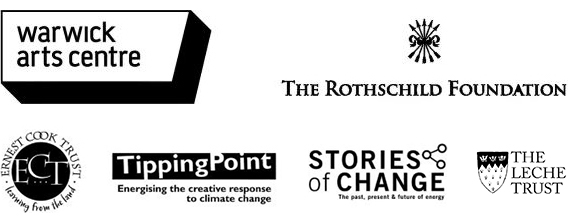The Spark of Life begins with a historical overview of animal electricity studies in pre-Victorian times. It ends with a look at the marvels of modern medicine. Kevin was keen to find a way to similarly span the centuries in Charge, filtering in images from both eras and cultures.
The Spark
IMAGES and IDEAS
“The awakening of a cultural sense of ourselves as electric beings was very strong and very interesting and I wanted to use that”.
Kevin Finnan
- Frogs, Frank and a human Zoetrope.
The book provided a wealth of striking imagery from the c18th. In the rehearsal studio, these became starting points for tasks or ‘briefs’ for the Motionhouse dancers to work on. The startling image of electrified frogs was Kevin’s first point of connection.
The ground-breaking experiments in animal electricity, conducted by Luigi Galvani, involved applying electric shocks to the nerves supplying the leg muscles of freshly-dissected frogs which made them twitch. Even more spectacular and macabre were the subsequent public demonstrations by Galvani’s nephew in which the bodies of recently-executed (often decapitated) criminals were electrified ‘to sensational effect!’ It is likely that Mary Shelley, the author of Frankenstein, knew about these events. Frankenstein was too powerful a literary icon to ignore. Both frogs and ‘Frank’ (as the monster became known in the rehearsal space) feature in Charge, with Frankenstein as the science-fiction projection of Galvani’s discoveries.
A human Zoetrope also makes an appearance. This was a scientific mechanical toy, much favoured in the pre-animation Victorian era, and included to give a sense of the culture of the times (plus the idea of choreographing real bodies using light and extremely precise timing was an irresistible challenge!)
- “Man is simply electrified clay”
Following Galvani’s discoveries, experiments in static electricity became a popular Victorian parlour game:
“Members of the public were invited to be charged up with static electricity and then ignite brandy or ether with sparks from their finger-tips. Ladies donned glass slippers to insulate them from the ground and were electrified so that when their gentlemen friends approached with puckered lips outstretched, sparks flew between their lips”.
Professor Ashcroft
The flirtatious mood and the idea of electrical charge jumping hand-to-hand between couples was a “tremendously grounding thought” (Finnan) which became a ‘brief’ leading to the creation of four compelling duets built on ideas of attention, attraction and bio-electrical magnetism.
The duets were eventually left out of Charge but the idea and some of the material were assimilated into the mother-daughter and lightbulb duets.
- The Lightbulb and the Brain
Labelled as a bit ‘Mad and Bad!’ following the macabre experiments and frivolous parlour games, the serious scientific attention in the 18th century turned from Galvani’s frogs to the experiments of his fellow Italian, the physicist Alessandro Volta (the clue is in the name!)
Volta built on Galvani’s work but dispensed with the frogs and focused instead on electrical conduction between metals. His experiments led to what became known as the ‘voltaic pile’; the world’s first battery.
Kevin liked the idea of playing with the Galvani/Volta parallel and the metaphorical comparison of the soft, complex networks of dendrons and synapses in the human brain and the hard infrastructure of pipes and wiring lighting up a metropolis at night:
Kevin's Brain Inspiration
The counterpoint is set up in Hive City when the action zooms in from a hostile undercurrent in a city street, to an isolated room in which someone is suffering. Kevin had a strong picture in his mind that he wanted to convey: brain scans of Alzheimer patients show areas of the brain being starved of electricity, literally going dark – like turning out the lights:
“I had images of lights and darkness; of being trapped in your mind and being trapped in your own little room and I put these two pictures together to make a story”
Kevin Finnan
- The Heart
Every beat of the heart, throughout the length of our lives, is driven by bio- electrical signals. In a healthy person, the signals tell each heart cell to contract at the same time so the whole heart beats as a single powerful pump, forcing blood out and around the body.
The common assumption is that a heart attack means the heart has stopped. In fact, quite the reverse is true: in ventricular fibrillation (a common form of heart attack), it is electrical chaos that causes the problem; when all the necessary signals go out of sync causing heart cells to beat at different times. It has been said that the heart looks like a writhing bag of worms! In this condition, it can no longer act as a pump and the only chance for the patient is to stop all electrical activity and hope that, if it restarts itself spontaneously, normal synchronised rhythm will be restored.
Kevin wanted to embody the physical shape and pulsating movement of the heart. He was also drawn to the dramatic idea of choreographing a heart attack and showing the heart reduced to a wriggling ‘bag of worms’. He chose Naomi, the daughter, as the victim because, in narrative terms, the shock of losing her child would be a powerful memory for Becky and lend emotional detail to the story-line.
“We too are electrical machines; electrical currents lie at the heart of life itself”
Professor Ashcroft
- Sperm
A century and a half after Galvani, with an ageing population and a rise in mental health disorders, both the book and the production chime with a resurgence of scientific and public interest in biological electricity. We know that the heart and brain are excited by electricity; that the spark of mutual attraction between two people “may be more than just lovers’ talk”; and that the electrical cycle of life starts anew the moment a sperm meets an egg and a charge is released, firing it forward to begin a new life. And we also know that when electrical activity malfunctions, the body is brought to its knees, and when it finally disappears altogether, life draws to a close.
“When I read the book and saw the images, I was drawn into this whole world of cells and ion channels and thought this is fabulous; this is a place to bring to life. Once I discovered Frances, it became very clear to me that I was going to make a work that went from a single cell all the way up through the layers of existence to the modern day and out through the modern day into the weather”.
Kevin Finnan
So Charge awakens its audience to a universe swirling with electricity from top to bottom and inside out. And in the midst of all this energy, a single bio-electrical thread of memories unravels to tell an ordinary, everyday story of love and human frailty.
“Is man simply ‘electrified clay’ or are we more than that?”


